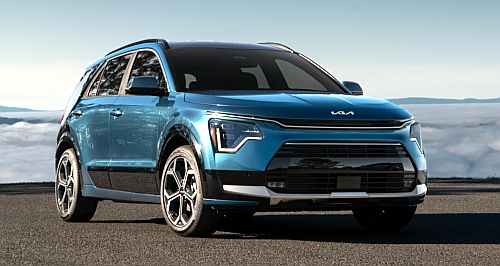News - Kia - Niro - EV SportPHEVs are a ‘dead end’- KiaKorean brand says the stats show PHEVs aren’t selling as well as they could, or should7 Jun 2023 PLUG-IN hybrid electric vehicles - or PHEVS - appear to be a lost cause in the Australian market, at least according to the head of one of the brands that sells a PHEV.
Kia Australia’s newly appointed CEO, Damien Meredith, has asserted that PHEV models simply aren’t stacking up in the eyes of consumers when there are EV or ‘regular’ hybrid options that offer a better fit for consumer needs.
Plug-in hybrid models typically have a petrol engine and the option to run on full EV power thanks to a smaller capacity battery pack allowing urban-friendly EV driving range (usually between 50 and 80 kilometres). The internal combustion engine (ICE) can then either work as a generator to add energy to the battery pack, or take over from the EV system when battery range is depleted, or work in tandem with the electric motor.
The concept isn’t simple, despite making a lot of sense for new-car buyers who perhaps want to dip their toes into the electric vehicle pool, while not necessarily wanting to feel the crush of range anxiety that they might if they were to buy a fully electric vehicle.
Mr Meredith said that it is a pretty difficult concept for consumers to understand on the surface, and that might be why few of them are actually going to a showroom to see what a PHEV might be able to do for them.
Kia offers the Sorento GT-Line PHEV, and that particular model has had its orders paused due to supply constraints. So, when asked if Mr Meredith sees the technology as a ‘dead end’, his reply was insightful.
“Looking at the figures it is,” he said, referring to the most recent VFACTS monthly sales data from the FCAI.
“Last month there were 791 PHEVs sold. Full electric - 8124. Probably paints a picture,” he said.
“I think I’ve said to you before, I drive one, and for me it’s perfect. I’m 10km from work, and all I do each morning is plug it in at work. The great benefit is I don’t have to go to the petrol station - I didn’t realise what a pain in the bum it is to go to the petrol station, you save time.
“But my personal view is, it’s a hard concept to sell. I don’t think the consumer understands it,” said Mr Meredith, pointing to the history of very slow sales of PHEV models in Australia.
Kia itself pulled one of its PHEVs from sale in recent times. The second-generation Kia Niro small SUV was set to be offered with hybrid, plug-in hybrid and EV models, as it was in the first-gen version. But the brand didn’t see enough demand for the PHEV version.
Roland Rivero, general manager of product planning and training, said the brand could call the Niro PHEV into the fray at any point, should it need to.
“With the Niro PHEV, we did the Australian ride and handling tuning for it, we did homologation for it. So it could be called up at any point if there was a sudden market demand for one. But at this stage, it’s not happening,” he said.
Further, Mr Rivero stated that the sole PHEV model on the books at Kia, the Sorento GT-Line PHEV, isn’t currently available to order.
“It’s suspended at the moment because of the order bank, and as soon as the order bank is back under control, it could be back on. That’ll happen in quarter four 2023,” he said.
Kia isn’t alone in feeling the pressure around PHEV models.
The Holden Volt was arguably the first big flop when it came to the plug-in hybrid powertrain technology, though it was hardly given a chance by the jingoistic V6 and V8 Commodore fraternity more than a decade ago.
Mercedes has meddled with PHEV models in the past, and still does to a degree. But it discontinued the A250e sedan in late 2022, and the future of PHEVs for that luxury brand and others remains under a cloud.
Other companies are pushing hard into the PHEV arena, though, with Peugeot launching the 3008 and 308 plug-in models, and soon to launch the 408 with PHEV power only. Mazda, too, is launching a number of new models with PHEV variants, and the company says it has been surprised by the demand for the technology for the new CX-60 and CX-90 SUV models.
Mitsubishi is arguably the standout player for PHEV models, with the Eclipse Cross and Outlander plug-in hybrid EVs selling in small numbers, while MG also offers the HS Plus EV mid-size SUV, which is one of the most affordable PHEVs on the market in Australia at the time of writing.
 |
Click to shareKia articlesResearch Kia Motor industry news |














Facebook Twitter Instagram